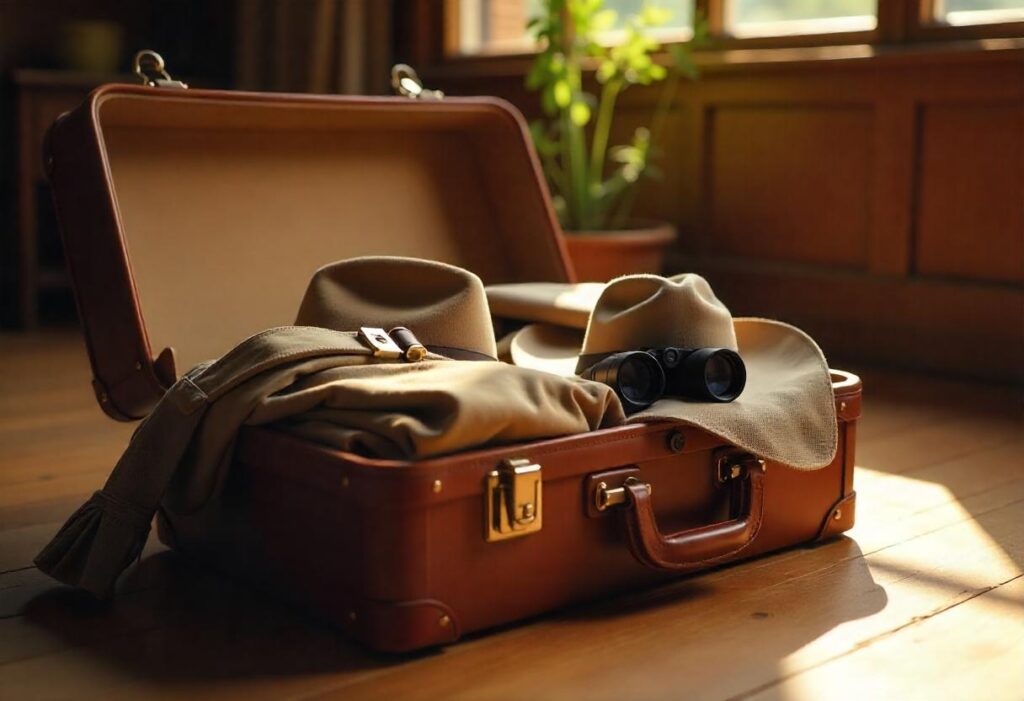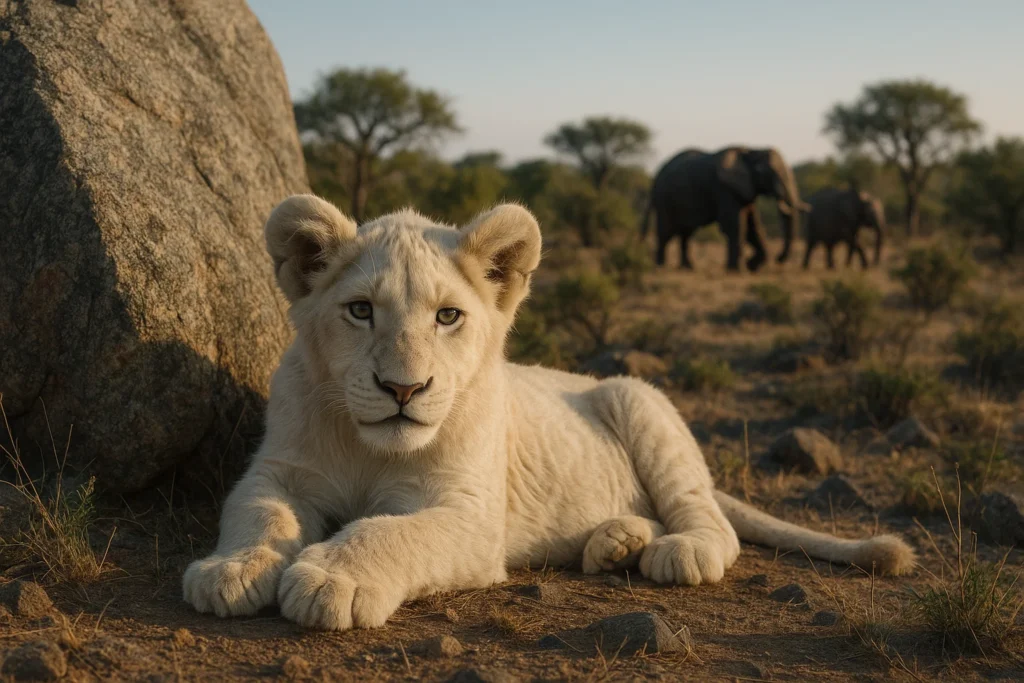A safari is a thrilling adventure that requires the right gear to ensure comfort and safety while you explore the wild. Packing for a safari, however, can be tricky due to varying climates, diverse activities, and unpredictable conditions. To help you prepare, here’s an essential safari packing list, along with advice on what to bring (and what to skip) depending on the season.
What to pack for a Safari: The essentials
1. Clothing for Safaris
Choosing the right clothing is crucial for staying comfortable, cool, and protected during your safari.
- Neutral-colored clothing: Pack lightweight, neutral colors like khaki, olive, and brown. Bright colors or white can attract insects and disturb wildlife.
- Lightweight layers: For early morning game drives, temperatures can be chilly, while the midday sun can get hot. Pack lightweight layers that can be easily added or removed.
- Breathable fabrics: Choose moisture-wicking materials to keep you dry and comfortable. Avoid cotton, as it can absorb sweat and take a long time to dry.
What to skip: Avoid jeans or heavy fabrics that can be uncomfortable during long drives or hikes.
2. Footwear for Safaris
Your choice of shoes can make a big difference on safari.
- Comfortable walking shoes: Opt for sturdy, comfortable shoes with good support for walking safaris or hikes.
- Flip-flops or sandals: These are ideal for relaxing at your lodge or camp.
- Closed-toe shoes: For evening walks and to protect against insects and thorny plants.
What to skip: High heels or shoes with slippery soles. They won’t be practical for the uneven terrain of a safari.
3. Accessories for sun protection
The sun can be intense, so it’s essential to bring gear to protect yourself.
- Hat and sunglasses: A wide-brimmed hat will protect your face and neck from the sun. Sunglasses are essential to shield your eyes from UV rays.
- Sunscreen: High SPF sunscreen is a must. Don’t forget to apply it regularly, especially after water activities.
What to skip: Avoid heavy makeup or excessive jewelry, as they can irritate your skin and attract unwanted attention from insects.
Safari packing list for different seasons
Safari packing for hot and dry seasons
The hot, dry season is typically the best time for game viewing in many safari destinations, as animals tend to congregate around water sources.
- Lightweight clothing: Stick to lightweight, breathable fabrics that will keep you cool.
- Wide-brimmed hat: To protect from the intense midday sun.
- Insect repellent: Mosquitoes and other insects can be a problem, especially in the evenings and at dawn.
What to skip: Heavy jackets or thick fabrics—avoid anything that will make you overheat in the heat of the day.
Safari packing for wet and rainy seasons
During the rainy season, conditions are a bit different. You’ll need to pack for wet, slippery terrain and potentially muddy conditions.
- Waterproof jacket: A compact and breathable rain jacket will keep you dry during unexpected showers.
- Waterproof shoes: Ensure your shoes are durable and water-resistant to handle wet conditions.
- Quick-dry clothing: Clothes that dry quickly are essential for those unexpected rain showers.
What to skip: Avoid cotton clothing, which can take forever to dry in humid conditions.
Safari packing for cooler seasons
If you’re traveling during the cooler months, early mornings and evenings can be particularly chilly, so layering becomes key.
- Warm layers: A fleece jacket or light sweater can help during the cooler evenings.
- Long-sleeve shirts: To protect from chilly mornings and bugs.
- Scarf or neck gaiter: To protect your face from the cold during early morning game drives.
What to skip: Heavy winter coats are unnecessary unless you’re heading to a high-altitude safari, like those in the Masai Mara during the cooler months.
Additional Safari packing items you shouldn’t forget
1. Binoculars and Camera Gear
Bring binoculars to enhance your wildlife experience and a camera with a good zoom lens to capture the action. A small travel tripod can also be useful for steady shots.
2. Medications and First Aid Kit
- Personal medications: Make sure to carry any prescriptions you need. Anti-malarial medication is recommended for certain areas.
- Basic first aid: Band-aids, antiseptic wipes, and painkillers should be packed for any minor injuries.
3. Safari Travel Documents
- Passport and visas: Ensure your passport is valid and that you have any required visas for the country you’ll be visiting.
- Travel insurance: Consider getting insurance that covers safari-specific activities like emergency evacuation.
What to Skip: Common packing mistakes
1. Excessive Luggage
Leave behind bulky items. Most safari vehicles have limited space for luggage, and you don’t need unnecessary extras.
2. Heavy or Flashy Jewelry
Not only can it attract attention, but flashy jewelry is impractical and often uncomfortable when traveling in the bush.
3. Large, Non-Secure Bags
A large, unsecured bag could easily get caught on something in your safari vehicle, while smaller, secure bags are better for storing valuables.
Conclusion: Packing smart for your Safari adventure
When it comes to safari packing, less is often more. By packing wisely, you’ll be prepared for any conditions, from hot and dry to wet and chilly. Stick to the essentials, plan for the season, and don’t forget to pack items that’ll enhance your experience—whether it’s your binoculars, camera gear, or your sunscreen. With the right gear, you’ll be ready for the adventure of a lifetime.
FAQs
Pack lightweight, neutral-colored clothing, a good hat, sunscreen, insect repellent, and comfortable footwear. Also, don’t forget binoculars, a camera, and necessary medications.
Jeans are not ideal for safaris. Opt for lightweight, breathable fabrics that will keep you comfortable during long drives and walking safaris. Avoid anything too heavy or restrictive.
Avoid excessive luggage, heavy or flashy jewelry, cotton fabrics, and large non-secure bags. These items can be cumbersome and impractical during a safari.
It depends on the season. For the cooler months or early morning game drives, a light fleece or jacket is recommended. However, heavy winter coats are unnecessary unless you’re visiting high-altitude regions.
Comfortable, sturdy walking shoes are essential for safaris. Opt for shoes with good support for walking safaris or hikes. Flip-flops or sandals are good for relaxing at the lodge.
A small, secure bag or soft duffel bag is best for safaris. It should be compact and easy to store in the safari vehicle while keeping your valuables safe.
It depends on the region. For the best wildlife sightings, the dry season (June to October) is ideal, but the rainy season (November to April) offers lush landscapes and fewer tourists.
Malaria medication is recommended for certain areas in Africa. Consult with a travel doctor before your safari to determine what’s best based on the location you’re visiting.
A camera with a good zoom lens (at least 200mm) is ideal for capturing wildlife from a distance. A small tripod for steady shots and extra batteries are also useful for longer game drives.
Luggage restrictions are common on safari vehicles, so pack light. Most safaris limit you to one soft-sided bag, often weighing no more than 15-20 kg (33-44 lbs).






